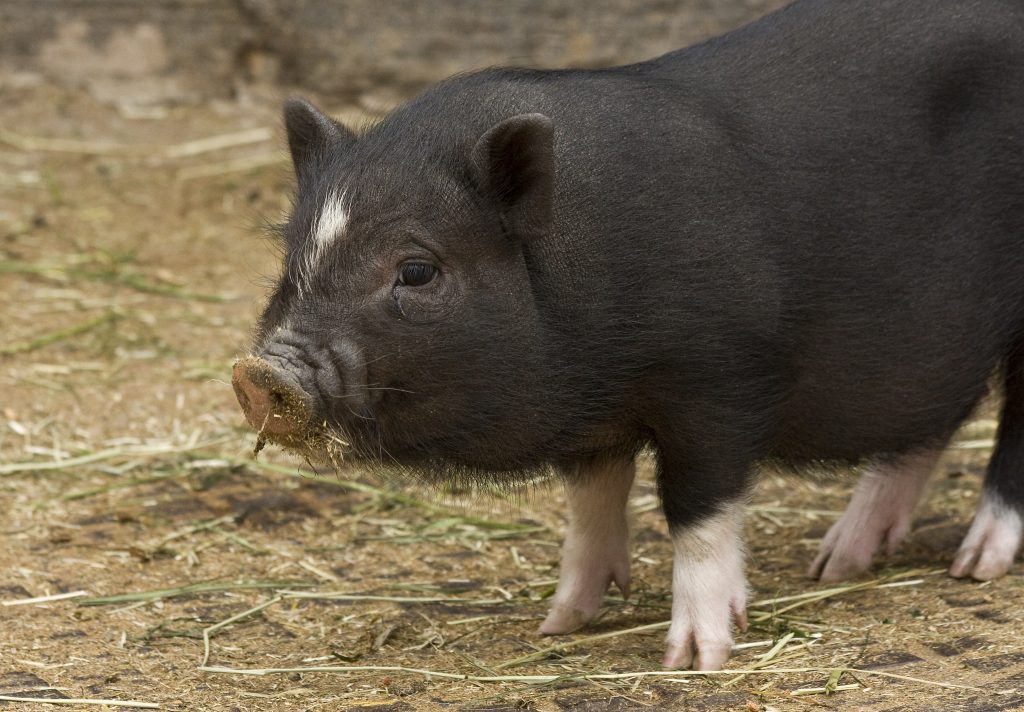Catalonia presents its invasive alien species blacklists and watchlists
The first global report on invasive alien species is to be released at midday today. Aimed at policymakers in the more than 140 member governments of the Intergovernmental Platform on Biodiversity and Ecosystem Services (IPBES), the report assesses trends in, the causes and impacts of, and proposals for dealing with biological invasions around the world. The different control measures IPBES puts forward include creating information systems, establishing prevention plans with blacklists and watchlists, and endeavouring to eradicate certain species at the onset of invasions. In that regard, the Government of Catalonia’s Ministry of Climate Action, Food and Rural Affairs works with the territory’s Natural Heritage and Biodiversity Observatory to integrate data on invasive species from different institutions and initiatives, with a view to it subsequently being used to plan for and manage the environmental, social and economic problems biological invasions entail. Most of the work involved is carried out by CREAF, which has spearheaded the development of blacklists and watchlists of the most harmful species that could become established in Catalonia in the coming years and are thus being prioritized.
CREAF has spearheaded the development of blacklists and watchlists of the most harmful species that could become established in Catalonia in the coming years and are thus being prioritized.
This is the first time Catalonia has had such lists, a measure in line with the international scientific recommendations made by IPBES. Thanks to the EXOCAT project, plenty of work on biological invasions has actually been taking place in Catalonia for over a decade. Released in January 2023, EXOCAT’s most recent report further extended the list of alien species currently present in the territory, a catalogue established using an online information system managed by the Ministry of Climate Action and coordinated by CREAF. Blacklists and watchlists now complement that decision-making support tool.


“The IPBES report recommends setting up open, interoperable information systems to improve the coordination and efficiency of management actions for combating invasive species. Catalonia has had such a system for 10 years thanks to EXOCAT and the joint work of CREAF and the Ministry of Climate Action.”
JOAN PINO, director del CREAF.
Invasive species blacklists and watchlists
2023 has seen EXOCAT produce Catalonia’s first blacklists and watchlists of potentially invasive species. They feature almost 300 species in all: 172 on the blacklists, requiring control and eradication measures; and 125 on the watchlists, requiring monitoring and surveillance measures.
The lists are organized according to priority level:
- The priority-one blacklist includes alien species with great invasive potential already detected in Catalonia but not yet deemed invasive. These species require urgent control and eradication measures. The list is based on the species identified in Spanish Royal Decree 630/2013, EU Regulation 1143/2014 (or its subsequent amendments), and/or Catalonia’s Priority Species Table.
- The priority-two blacklist includes species with less invasive potential already detected in Catalonia, but not yet deemed invasive. These species are listed in Appendix 2 to Spanish Royal Decree 1628/2011. They do not need to be urgently targeted but ought to be taken into account in control measures.
- The priority-one watchlist includes alien species with great invasive potential not yet detected in Catalonia but requiring careful monitoring to prevent their arrival. The list comprises species identified in Spanish Royal Decree 630/2013, EU Regulation 1143/2014 (or its subsequent amendments), and/or Catalonia’s Priority Species Table.
- The priority-two watchlist includes species with less invasive potential present in the Iberian Peninsula but not yet detected in Catalonia. These species are listed in Appendix 2 to Spanish Royal Decree 1628/2011. They are not covered by current regulations but ought to be taken into account in monitoring measures.

Catalonia, Spain and Europe have different regulations on the invasive species of greatest concern, and the blacklists and watchlists are based on those regulations. Specifically, they are the Priority Species Table of the alert network managed by the Government of Catalonia’s Ministry of Climate Action, Food and Rural Affairs; Spanish Royal Decree 630/2013, of 2 August 2013; and EU Regulation 1143/2014 on invasive alien species, of 22 October 2014.
The main groups on the blacklists and watchlists are plants, birds, aquatic invertebrates, and mammals. Most of the birds with invasive potential considered a priority are already present in Catalonia and therefore appear on the blacklists, whereas many of the plants and mammals identified have yet to be detected in the territory and thus feature on the watchlists.

“The listed species are mainly such a concern because of their ability to cope with different environmental conditions and, above all, their great dispersal and colonization capabilities, factors that make them difficult to control.”
ROSER ROTCHÉS, coordinadora tècnica d’Exocat
“Wanted”
There are different groups of animals and plants among the species of greatest concern already spotted in Catalonia but yet to become invasive (i.e. those on the blacklists). Such plants include spiny cacti of the Cylindropuntia genus (C. spinosior), and a number of aquatic plants, especially of the Ludwigia genus (L. grandiflora), as well as Egeria densa and Eicchornia crassipes. The insects identified notably include the oriental hornet (Vespa orientalis), which the Ministry of Climate Action theoretically eradicated after it was first detected in Catalonia in the Port of Barcelona in 2022. Of particular note in the case of birds are some parrots formerly placed in the Aratinga genus and found in the city and metropolitan area of Barcelona, such as Psittacara mitratus and Nandayus nenday. The two “most wanted” mammals are the raccoon (Procyon lotor) and the Vietnamese pig (Sus scrofa var.. domestica), both of which the Ministry of Climate Action is targeting with control measures.

Species not yet found in Catalonia but present in an invasive capacity in adjacent or nearby territories (i.e. those on the watchlists) include seaweeds such as Caulerpa taxifolia, Asian crustaceans(Cherax destructor, Eriocheir sinensis), and various striking mammals already widespread in Europe: the Javan mongoose (Herpestes javanicus), the common raccoon dog(Nyctereutes procyonoides), the grey squirrel(Sciurus carolinensis), the Barbary sheep(Ammotragus lervia), Reeves’s muntjac(Muntiacus reevesi), and the muskrat (Ondatra zibethicus).
The American bullfrog: a recent eradication success story in Catalonia
In August, the Ministry of Climate Action and the Ebro Delta Natural Park declared the American bullfrog (Lithobates catesbeianus) to have been eradicated from the delta, although sampling will be carried out again in 2024 to confirm that to be so. The latest results of surveillance of the invasive species in question show that it was not detected in any of the areas studied.
“Early detection and fast, decisive action were crucial to the American bullfrog’s recent eradication from Catalonia, which can be regarded as a success story, given the high potential for adaptation of this invasive species in a system as complex as the Ebro Delta,” explains Marc Vilahur, the Ministry of Climate Action’s director general for the environment and environmental policies. Another noteworthy aspect of the eradication plan was the high level of cooperation between the different bodies, volunteers, research teams and experts involved.

The American bullfrog was first detected in June 2018, when tadpoles were found in lagoons in Illa de Mar (left Ebro hemidelta). In the light of the impact the species could have on the delta, control measures were immediately taken to contain the nucleus detected and an eradication plan was launched.
Most of the species on the blacklists and watchlists have a significant environmental impact, altering conditions and displacing autochthonous species. Aquatic plants, for example, can change water levels in rivers and lagoons, as well as obstructing irrigation infrastructure. Other species can affect human health or the economy; that applies to the cacti of the Cylindropuntia genus, whose spines can harm animals and humans, and to the oriental hornet, which can be a problem for the beekeeping sector and a public health concern due to its sting. Parrots can have a hugely detrimental effect on agriculture, while some mammals are voracious predators and can carry diseases transmissible to local fauna or even humans.







